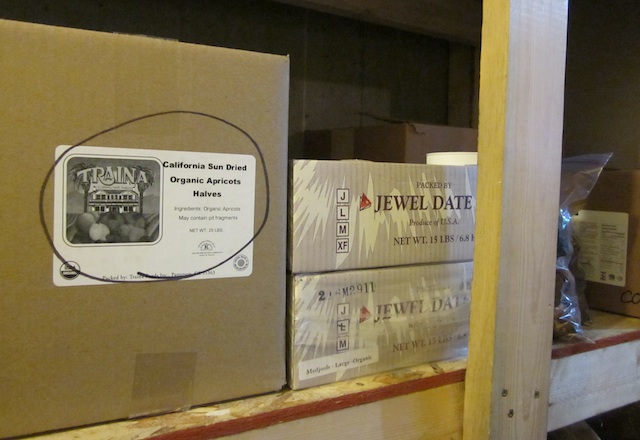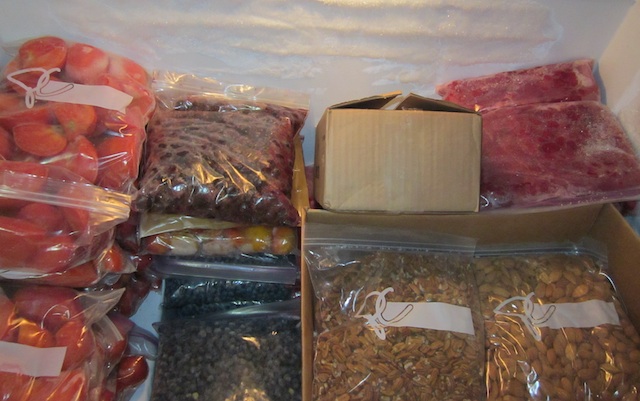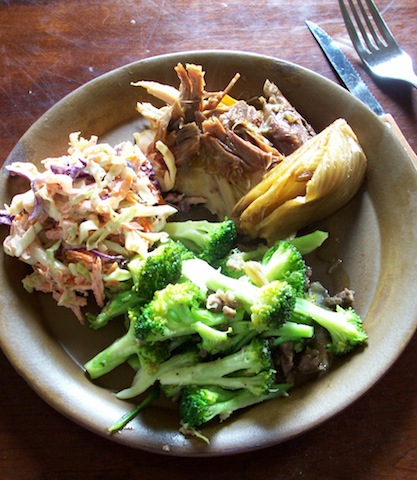GUEST POST by Maureen Lefebvre
When living on a homestead, however small, the story never really ends. The new chicken coop was wonderful. The old chicken tractor became the home of the new chickens until they were large enough to hold their own with the older girls. We had to deal with an outbreak of lice at one point. After trying all the natural remedies I could find, I resorted to one application of a garden pesticide. The lice were gone instantly. Unfortunately the health of one chicken had deteriorated too far to recover and she had to be put down. You?d think chickens with lots of room to roam could get along with each other, but no. At one point two of them took to pecking on their sister. This is apparently a chicken trait and as quickly as it started, it was over.
One of my greatest joys is to look out my kitchen window at the chickens pecking at the grass, chasing after bugs and creating dust baths. I do this many times in a day ? a mini relaxation break. One day last summer I looked out and to my horror the hens were in our neighbor?s yard! Immediately my youngest son was sent out to retrieve them while I hastened over to explain what this young child was doing in his backyard. It was with complete surprise that I learned from him that the chickens had routinely been into his garden over the summer. His disapproval was apparent and understandable, although I did wonder why he hadn?t mentioned it. I offered a carton of fresh eggs as apology, but was rebuffed. Oh, well. So, obviously, the girls had to be contained. My teenage son was again recruited and the next building project became an enclosed, covered outside pen. This was perfect for the winter months it turned out, as the chickens could be outside every day, but didn?t have to contend with the snow. I spread a shredded bale of straw over the ground and they were content. Now that the weather has improved and the grass is greening up I?ve extended their grazing space by propping up a woven wire fencing in a half-circle outside the door to the coop. From the house the fence is almost invisible and it looks like they instinctively know not to range more than ten feet from home.
What is in store now on our urban homestead? More projects, of course. The coop still needs to have siding on it. I want to change over the nest boxes to something easier to clean (with the nice weather a good spring cleaning is on the agenda). We?re thinking of milk goats and research on that topic is a hot item in the house. For that we?ll need a small structure and really, really secure fencing. My teenage son is in the process of redoing my raised-bed garden as the railroad ties are completely rotten. I?d like to put the birds in there for several days before I plant. It?s all a process and is never completed, but enjoying the journey is as important as the end result. Keeping in touch with your creative side in whatever form that takes is one vital component of the total health spectrum.







